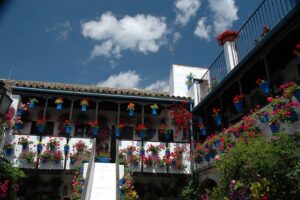
JUDAISM IN SEPHARAD
After the death of Muhammad, there were military conflicts among those who, as brothers, listened to the teachings of the “prophet,” as some considered themselves more “his followers” than others, a characteristic that has defined this sect to this day. There were two well-defined groups: Sunnis (who base their authority on Muslim consensus) and Shiites (who believe in divinely appointed succession through the lineage of Ali ibn Abi Talib, Muhammad’s cousin and Fatima’s husband, Muhammad’s daughter). Since this division is primarily a matter of power, each of these groups has also suffered its own internal divisions from the beginning.
While the Jewish diaspora from Spain was developing, as we saw in the previous article, the Abbasid Sunni caliphate dominated from Turkey to Israel. This caliphate was quite hostile to the Jews in the area, leading to a large migration to the region stretching from Alexandria, through Morocco, to Spain itself (Al-Andalus), which was dominated by another Sunni caliphate known as the Umayyads.
The latter managed to dominate a predominantly Christian and Jewish region in a very wise, balanced, and open manner, allowing each group to live in freedom and interact with others in a respectful and enriching way. Hence, it was in Al-Andalus, including its capital Córdoba, that the well-known Islamic art flourished. This was thanks to the interaction of three groups that made up society: the majority Christians with their Cathedral of Saint Mary Mother of God at the center, the Jews with their Talmudic Yeshiva of Lucena, and the Muslims with their Mosque of Córdoba.
This period between 726 and 1492 was so good for the Jews that, for example, one of the Umayyad generals, Samuel Hanagid, who also became the vizier of Granada and a prolific writer, was Jewish. Other Jewish intellectuals also appeared during this period, covering branches such as literature, medicine, mathematics, and architecture among others: Yosef ben Abitur, Isaac ben Baruch Albalia, Isaac Alfasi, Hiyya al-Daudi, Abraham ben Meir ibn Ezra, Moses ibn Ezra, Ibn Gabirol, Yehudah Halevi, Yonah Ibn Janah, Isaac ibn Ghayyat, Yekutiel ben Isaac, Jelf ben Jelf, Dunash ben Labrat, Ibn Paquda, Solomon ben Reuben Bonafed, Menahem ben Saruq, Isaac ibn Said, Moses ben Maimon, and many more.
Unlike Catholic Christianity, which distanced itself from science because it contradicted many of its doctrines, Judaism always complemented science. This not only allowed it to develop but also made it more popular and necessary for a developing society. However, once Catholicism, through Kings Isabella and Ferdinand (Castile and Aragon), reconquered all of Spain by 1492, their radicalism, which did not allow them to properly deal with Jewish and Muslim influence, opted for the total elimination of these cultures from their society.
The plan was drastic under the powerful decree of the inquisitorial courts. First, the Jews and ten years later the Muslims had to convert to Catholicism or simply face death by burning or hanging if they did not leave Spain. Among the Jews, many converted with the hope that the situation would soon change and they could return to Judaism (which is permissible under rabbinic interpretation as long as life is at stake), while others left for new lands with the idea of returning at some point and that the situation would change. It is said, and there is historical evidence, that many families left with the keys to their homes hoping to return, as they could not take much from their more than ten centuries of Jewish presence in Spain.
The propaganda and rejection orchestrated by the Inquisition and Christian preachers to achieve this “Catholic cleansing” is one of the reasons why the Middle Ages had such a stigmatizing and negative focus not only towards Judaism but also towards the Jewish ethnicity itself, giving strength and developing the anti-Semitism that preceded the Lutheran Reformation and has persisted to this day.
Those who converted to Catholicism are known as the anusim (conversos), while those who managed to leave came to be called Sephardim. Why this name Sephardic? It is due to the interpretation of Obadiah 1:20, which identifies Sepharad with Spain.
In future articles, we will discuss these two groups: the Sephardic anusim and the Sephardim who expanded in new diasporas around the world.
To be continued…
Author: Dr. Liber Aguiar.
0 Comments